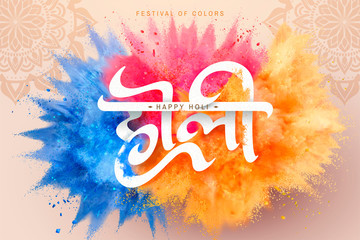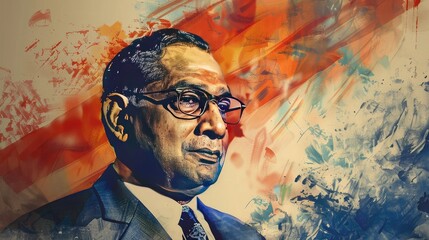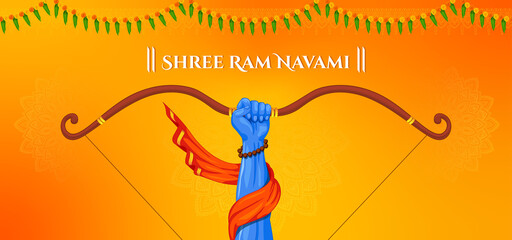
Introduction
Holi, often referred to as the “Festival of Colors,” is one of the most vibrant and joyous celebrations in India. It marks the arrival of spring and brings people together to celebrate with colors, music, and dance. Let’s delve into the rich traditions and significance of Holi.
The Origin of Holi
- Mythological Background: Holi has its roots in Hindu mythology, particularly the legend of Prahlad and Holika. Prahlad, a devotee of Vishnu, was saved from a fire set by his evil aunt Holika, symbolizing the triumph of good over evil.
- Historical Evidence: References to Holi can be found in ancient scriptures and texts like the Puranas and Dasakumara Charita, highlighting its long-standing significance in Indian culture.
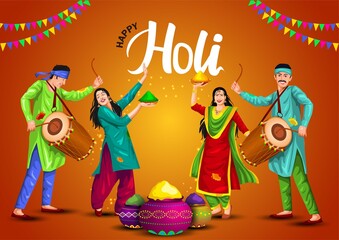
Significance of Holi
- Cultural Significance: Holi is a time for people to come together, forget their differences, and celebrate unity and love. It is a day to let go of past grievances and embrace positivity.
- Social Significance: The festival promotes social harmony as people from all walks of life participate in the festivities, strengthening community bonds.
Holi Preparations
- Buying Colors: Markets are filled with a variety of colors, known as gulal, in the days leading up to Holi. People buy these vibrant powders to play with during the festival.
- Preparing Traditional Sweets: Delicacies like gujiya, mathri, and malpua are prepared in households, adding a sweet touch to the celebrations.
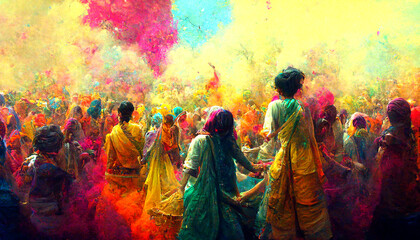
The Day Before Holi – Holika Dahan
- Rituals: On the eve of Holi, bonfires are lit to signify the burning of Holika. People gather around the fire, perform rituals, and sing traditional songs.
- Symbolism: Holika Dahan symbolizes the victory of good over evil and the eradication of negativity.
The Main Day of Holi
- Morning Celebrations: The main day of Holi begins with people smearing each other with colors. The streets come alive with laughter, water balloons, and colored powders.
- Evening Gatherings: In the evening, families and friends gather to enjoy festive meals and exchange greetings.

Holi Traditions and Customs
- Playing with Colors: The primary custom of Holi involves playing with colors. People joyfully throw gulal at each other, creating a vibrant and festive atmosphere.
- Music and Dance: Traditional songs and dances are an integral part of Holi celebrations. People sing folk songs and dance to the beats of dholak.
Regional Variations of Holi
- North India: In places like Mathura and Vrindavan, Holi is celebrated with great enthusiasm, featuring elaborate processions and performances.
- South India: In Karnataka and Tamil Nadu, Holi is known as Kamadahana and is celebrated with bonfires and prayers.
- West India: In Maharashtra and Gujarat, Holi is marked by lively dances, music, and festive feasts.
- East India: In West Bengal, Holi coincides with the spring festival of Basanta Utsav, popularized by Rabindranath Tagore.
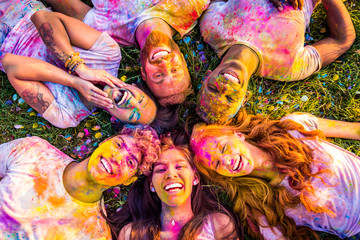
Holi Around the World
- Holi in the USA: Indian communities in the USA celebrate Holi with public events, music, dance, and cultural programs.
- Holi in the UK: Holi events in the UK feature color throwing, Indian cuisine, and performances, attracting people from diverse backgrounds.
- Holi in Other Countries: Holi is celebrated in various countries, including Canada, Australia, and South Africa, reflecting the global appeal of this vibrant festival.
Holi and Community Bonding
- Strengthening Relationships: Holi provides an opportunity for people to strengthen their relationships and mend broken bonds.
- Promoting Unity: The festival promotes unity and togetherness, encouraging people to celebrate with joy and harmony.

The Environmental Impact of Holi
- Eco-friendly Practices: To mitigate the environmental impact, there is a growing trend towards using natural and eco-friendly colors made from flowers and herbs.
- Government Regulations: Authorities are promoting the use of safe and non-toxic colors to ensure a healthier celebration for everyone.
Health and Safety During Holi
- Safe Use of Colors: It is important to use safe, natural colors to prevent skin and eye irritations.
- Protecting Skin and Eyes: Applying oil on the skin and wearing sunglasses can help protect against the harsh effects of synthetic colors.
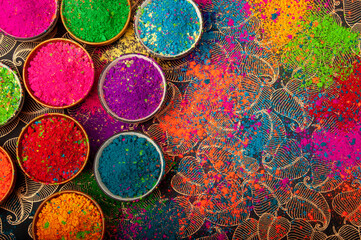
The Economic Impact of Holi
- Boost to Local Markets: Holi stimulates economic activity as people purchase colors, sweets, and festive attire.
- Tourism: The festival attracts tourists from around the world, boosting local tourism and hospitality sectors.
The Message of Holi
- Triumph of Good Over Evil: Holi reinforces the message of the triumph of good over evil, encouraging people to embrace righteousness.
- Embracing Diversity: The festival is a celebration of diversity and inclusivity, bringing together people of different backgrounds.

Conclusion
Holi, the Festival of Colors, is a celebration of joy, unity, and cultural richness. It reminds us of the importance of embracing positivity, fostering community bonds, and celebrating life with color and enthusiasm.

FAQs (Frequently Asked Questions)
- When is Holi celebrated? Holi is celebrated on the full moon day of the Hindu month of Phalguna, which falls in March.
- What is the significance of Holika Dahan? Holika Dahan symbolizes the victory of good over evil, commemorating the burning of the demoness Holika.
- What are eco-friendly colors? Eco-friendly colors are made from natural ingredients like flowers, herbs, and food-grade dyes, which are safe for the skin and environment.
- How can one protect their skin during Holi? Applying oil or moisturizer on the skin and using natural colors can help protect the skin from irritation.
- What is the cultural significance of Holi? Holi promotes social harmony, unity, and the celebration of cultural diversity, bringing people together in joyous festivities.

